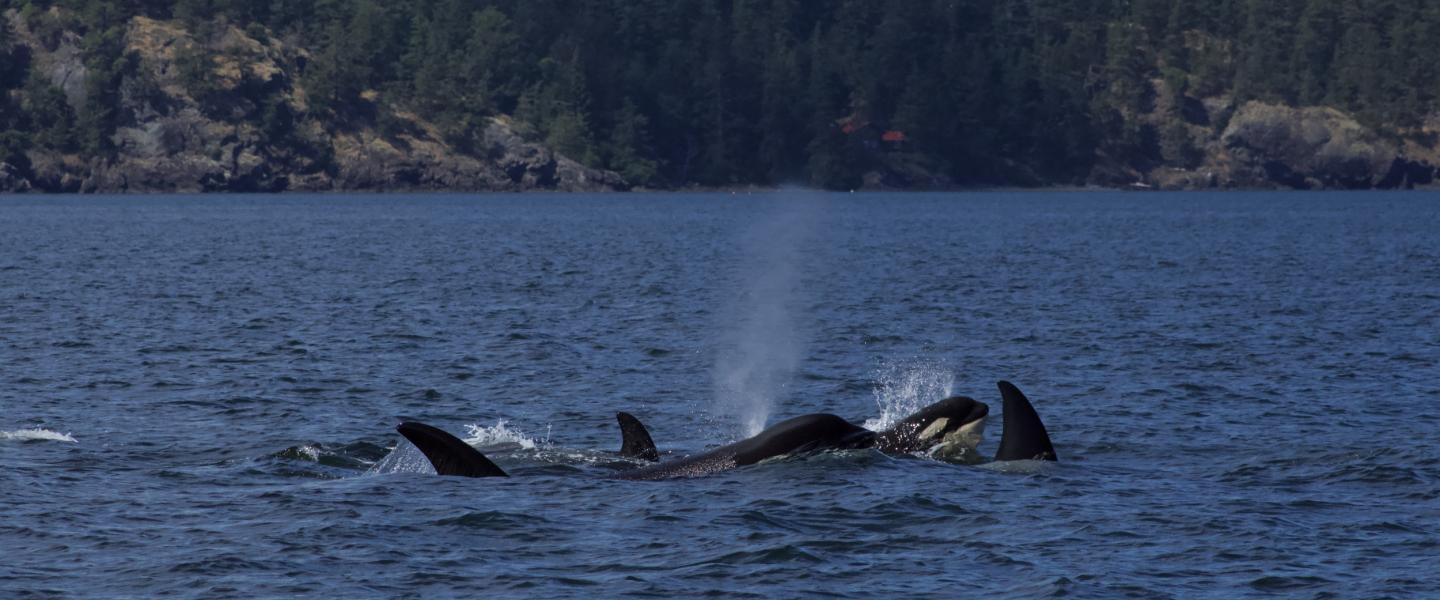
[Saturday, 6/9/18 - M/V Kestrel - 2:00PM - Naturalist Erick]
On Saturday we headed out for another wonderful wildlife filled trip in the San Juan Islands. Captain Mike and I took a lovely group of folks out on M/V Kestrel into the bright, sunny, and calm day. We went south along the Shaw Island shoreline and took an inter-island route to near Obstruction Island. As you pause and san the horizon here it looks like you’re trapped in between Orcas, Shaw, Lopez, and Blakely Islands with Orcas Island and Blakely Island seemingly making an unbroken undulating ridgeline to the east. But as you approach and get closer and closer to shore you can start to see the beginnings of two small passes separating the islands. These are Obstruction and Peavine Pass that surround the small landmass called Obstruction Island - well named right? We wound our way through Peavine Pass and took a look at about 20 Harbor Seals tanning themselves on Spindle Rock. After we left them we turned slightly left and what did we see coming out of Obstruction Pass just on the other side of Obstruction Island? Orcas! It was a larger group of Bigg’s (formerly known as Transient) Orcas! Bigg’s Orcas are one of the two ecotypes of orcas that we often see here in the Salish Sea. What is an ecotype you say? ecotype is kind of like a subspecies with a few differences. Subspecies usually distinguish members of the same species that are geographically isolated and start to display some genetic differences since the separated populations have few chances to interbreed. In the term ecotypes used for orcas, there is no geographic barriers - since all the world’s oceans are connected - but there are cultural barriers that make interaction and interbreeding very rare. So different ecotypes of orcas even though they may have very similar ranges can look different, sound different, behave differently all because they have genetically isolated themselves through their choices. The Bigg’s Orcas eat marine mammals while the other ecotype here, the Residents, feed on fish, mostly on salmon. This group of orcas was a mixture of two families, the T65A’s and the T37A’s It was super fun to watch them travel together and interacting with each other as they search for prey in Rosario Strait. The young ones were enjoying rolling around each other and occasionally bringing their tails out of the water. They may have a caught a few Harbor Seals (their main food source here) as we watched them and as they changed from a hunting pattern to more of a travel pattern we got some great looks at each individual family as they carried on northward. We left them as they rounded the PeaPods, a group of rocks that houses a bunch of Harbor Seals, and we continued up north along the jagged tree-topped cliffs on the northeastern side of Orcas Island. We made a few stops here to see some juvenile and adult Bald Eagles roosting in the treetops close to shore and then made our last stop at Java Rocks in Boundary Pass. Here we saw an adult Humpback Whale! These behemoths have been more and more a common sight in the springtime here, and some of them occasionally stay the whole summer! They really like the Boundary Pass area probably since there is a plethora of tiny fish and plankton there that they catch with their baleen. Whale folks that’s it for today! Until next time!
Naturalist Erick